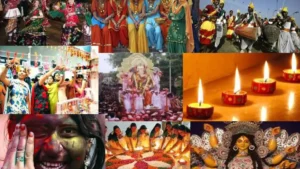World Vegan Day is celebrated every year to promote the benefits of a vegan lifestyle, which means avoiding all forms of animal exploitation — not just in food but also in clothing, cosmetics, and daily use products.
It reminds us that small changes, like choosing plant-based food, can help improve our health, protect animals, and sustain the environment.
What is World Vegan Day?
World Vegan Day celebrates the idea of living compassionately and sustainably. It encourages people to adopt a vegan lifestyle, which is about more than diet — it’s about respecting all living beings and reducing harm to the planet.
The day also spreads awareness about how plant-based living supports better health, animal welfare, and environmental balance.
When is World Vegan Day 2025 Celebrated?
World Vegan Day 2025 will be observed on November 1, marking the start of World Vegan Month.
On this day, people around the world take part in awareness campaigns, cooking workshops, vegan fairs, and sustainability events.
Cafés and restaurants introduce special vegan menus, while organizations host programs promoting eco-friendly and cruelty-free lifestyles.
What is World Vegan Day Celebrated?
The main goal of World Vegan Day is to inspire people to make kinder and more sustainable choices.
It urges everyone to rethink their food consumption patterns, which affect climate change, deforestation, and animal welfare.
The day also promotes the health benefits of veganism, such as:
- Lower cholesterol and better heart health
- Balanced blood sugar levels
- Reduced risk of lifestyle diseases
Ultimately, it’s about choosing a lifestyle that supports ethical living, healthy eating, and a greener planet.
Theme for World Vegan Day 2025
The theme for World Vegan Day 2025 is expected to highlight “Veganism and its Positive Impact on the Planet, Animals, and Human Health.”
This year’s theme focuses on how plant-based choices can help:
- Fight climate change
- Reduce animal suffering
- Improve public health and nutrition
It also encourages people to shift toward sustainable consumption, use eco-friendly products, and support biodiversity by living consciously.
History of World Vegan Day
World Vegan Day was first celebrated in 1994, established by Louise Wallis, then Chair of the Vegan Society UK, to mark the 50th anniversary of the society’s founding by Donald Watson in 1944.
The term “vegan” was created by combining the first and last letters of “vegetarian”, symbolizing the beginning and end of vegetarianism — a complete move toward avoiding animal products.
Today, the event is celebrated in over 180 countries, inspiring millions to explore compassionate and sustainable living.
How World Vegan Day Promotes Sustainability and Health?
World Vegan Day connects personal health with planetary well-being. Here’s how:
Health Benfits
According to studies by the National Institutes of Health (NIH), plant-based diets can help lower the risk of:
- Heart diseases
- Type 2 diabetes
- Obesity and certain cancers
Vegan diets rich in fruits, vegetables, legumes, and grains also improve digestion and immunity.
Environmental Benefits
- The livestock industry produces nearly 14.5% of global greenhouse gas emissions.
- Switching to plant-based diets reduces deforestation, water use, and carbon footprint.
- Vegan living supports biodiversity and helps restore the planet’s ecological balance.
Animal Welfare
Veganism rejects the exploitation of animals for food, fashion, or testing. By avoiding animal-derived products, individuals support a world with less cruelty and more compassion.
Core Principles of Veganism
Veganism is based on a few key principles that go beyond food choices:
- Avoid Animal Products: No meat, fish, eggs, dairy, or honey.
- Live Cruelty-Free: Avoid goods made from leather, silk, or wool.
- Support Sustainability: Choose eco-friendly, low-carbon products.
- Prioritize Health: Eat nutritious, plant-based foods.
- Raise Awareness: Advocate for animal rights and ethical consumerism.
How to Celebrate World Vegan Day 2025?
There are many simple and enjoyable ways to celebrate World Vegan Day 2025:
- Try Vegan Meals: Cook or order plant-based dishes.
- Join Events: Attend vegan food festivals or online awareness sessions.
- Support Local Businesses: Choose vegan-friendly cafés and stores.
- Educate Others: Share facts about veganism and sustainability.
- Volunteer: Help at animal shelters or environmental NGOs.
- Make Small Changes: Start with one vegan meal a day or switch to plant-based milk alternatives.
Every small step helps create a healthier, kinder, and more sustainable future.



 Which Country is Known as the Land of Fe...
Which Country is Known as the Land of Fe...
 When was IndiGo Airlines Founded and Who...
When was IndiGo Airlines Founded and Who...
 Which is the Coldest Place on the Earth?...
Which is the Coldest Place on the Earth?...







